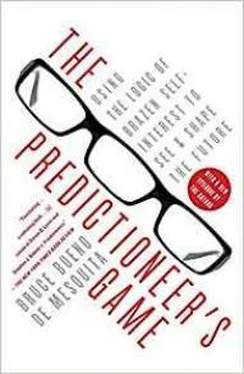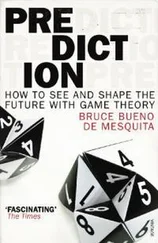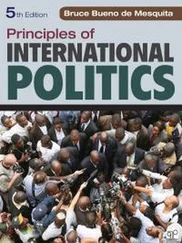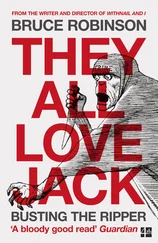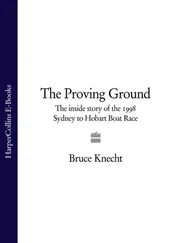Henry moved to protect property rights and rights of inheritance. These actions made it easier for peasant families to predict whether they would continue to benefit from the land they worked after the head of the family died or whether the lord of the manor would take away their opportunity to farm the land. Henry’s writs greatly shortened the judicial process for determining rights of access to the land and made for a more smoothly operating agricultural system. His new rules proved highly popular and effective in securing the property rights that are essential to economic growth, and they enhanced the king’s credibility as the person who would ensure order and justice in matters of property. Before the writs, tenant farmers were reluctant to invest in their land, but once Henry’s writs protecting property rights were in place, more effort was made by those working the land to produce more—for their own benefit as well as for the benefit of the lord of the manor.
Henry did not limit himself to improving property rights for ordinary people. He also acted to impose restrictions on Church rights, a bold move indeed. Through a writ called utrum , he asserted the king’s primacy in determining whether a dispute belonged in his secular courts or in the church’s ecclesiastical courts. Prior to Henry there was a presumption in favor of the jurisdiction of the ecclesiastical courts. Utrum reversed this presumption among litigants in England, a presumption that had been in place since the time of William the Conqueror a century earlier. Finally, Henry also moved to protect the patronage system that gave landowners the benefit of choosing clerics for appointment in their personal churches. This ran directly counter to the efforts of the church to take all such influence away from the secular domain, as is evident from the rulings in Lateran II (1139) and III (1179).
Henry’s effort to strengthen his hand against the church was further reinforced by his use of the jury system to replace trial by ordeal. Trial by ordeal decided innocence or guilt through the presumed intervention of God. Two common ordeals, both supervised by the Church, involved submersion of the accused in deep water or forcing the accused to hold a red-hot piece of iron for a prescribed amount of time. Failure to stay submerged for the prescribed time was taken as proof of guilt, as was the inability to hold the red-hot iron. As Henry’s legal adviser observed at the time, guilt or innocence had more to do with the thickness of one’s calluses or the ability to hold one’s breath than anything else.
The shift to a jury system helped weaken Church institutions and income. Trials by ordeal were supervised by the clergy, who were well compensated for their participation. For instance, two priests are known to have been paid ten shillings for blessing the ordeal pits near Bury St. Edmunds in 1166. At the time, a worker’s daily wage was about one penny, and a villein and his entire family could be purchased for 22s. 2So 10s for a blessing was a significant amount of money. At 12 pennies to the shilling, the blessing cost the equivalent of 120 days of labor for an ordinary worker. That amounts to over $5,600 at the current U.S. minimum wage just to get the ordeal pit blessed (it’s about double that when evaluated relative to the income of the average American worker rather than those earning just minimum wage). With the stroke of a pen, Henry cut Church income substantially and increased his own by introducing the jury system.
The administrative structure of the modern state also began to emerge in the twelfth and thirteenth centuries. The king’s right to levy taxes for reasons other than necessity gradually developed in exchange for political concessions to his subjects, most notably in 1297 when Edward I accepted Confirmatio Cartarum. Edward, in “confirming the charter,” acquiesced to the changes that had been wrought by Magna Carta eighty years earlier (King John had agreed to and then promptly reneged on the deal). These new tax revenues gave the king the ability to muster an army without having to rely on the intricate rights and restrictions implied by the feudal order. Consequently, the bishop’s military guarantee to the king “through the lance,” granted at Worms, diminished in importance. The pope, in contrast, continued to rely on feudal commitments to raise an army.
King’s courts at fixed locations in England and in France replaced the itinerant justice of an earlier time, thereby centralizing judicial control in the hands of the king, further diminishing the role of the Church as an adjudicator of disputes and further emphasizing the king’s territorial sovereignty. Additionally, kings began to claim that they ruled by divine right, thereby challenging the pope’s special position as allegedly chosen by God. In the jockeying for control, both kings and church evolved new institutions and methods to foster or stymie economic growth and wrest political control.
The eventual result of all of this competition was just what the game set up at Worms predicts. The Church worked to keep income high within the ecclesiastic domain and low elsewhere. Kings worked to achieve the opposite, seeking control over courts and taxes wherever and whenever possible. Eventually, secular wealth became so great that, as the game implies, kings stopped caring who the bishops were. Kings no longer felt a need to keep the pope happy, and the dominance of the Catholic Church was replaced by the dominance of sovereign states in a secular world.

Now that we have seen how we could peer ahead to the big picture five hundred and more years after 1122, let’s do the same for our own time. Let’s take a look at the inconvenient truth that won Al Gore the Nobel Peace Prize.
The world seems to be undergoing significant warming. The rise in temperature is melting ice in the North Atlantic and elsewhere, raising ocean levels and threatening to sink low-lying island nations and mainland coastal areas. The gathering of more ferocious storms promises years of destructive forces from wind and rain. Higher temperatures will push some temperate climates into the subtropical zone and some subtropical environments into the great stifling heat of the tropics.
First, let me provide a little background on the issue of global warming. After years of debate, including warnings in the 1960s and 1970s of an approaching new ice age, there now seems to be broad agreement within the scientific community that the earth’s temperature is on the rise. How much of the rise is due to human activity and how much to a normal cycle in earth’s climate is less easily agreed on, mostly because the cycle seems much longer than available weather data. We know, for example, that the High Middle Ages (what we used to call the Dark Ages) were a warm period accompanied by rapid economic growth. We know things got colder, at least in Europe, roughly from the Renaissance until probably sometime in the nineteenth century. And we know things are getting warmer again. We also know the increase in temperature is larger than seems to have been true at any time over the past thousand or so years. 3Of course, in the earth’s history a thousand years is a short time, though on the human clock it is pretty long. Scientists seem to concur that the extra rise in temperature is associated with industrialization and modern chemical-fertilizer farming, and that fossil fuel use is among the big culprits. Obviously, concern about global warming is strong enough that there are ongoing international efforts to bring it under control and even reverse it.
What can game theory tell us about efforts like Kyoto, Bali, and Copenhagen—that is, international conferences to regulate greenhouse gas emissions—to find solutions to the real threat of global warming? What can we learn that will help us carve out a better future for our species and our environment in the centuries to come? Frankly, we will see that agreements like the Kyoto Protocol and the efforts at Bali or Copenhagen to reduce greenhouse emissions, especially carbon dioxide emissions, are not likely to matter. They may even be impediments to real solutions. That is not to say that there is not good hope for the future. There is, because global warming produces its own solutions.
Читать дальше
